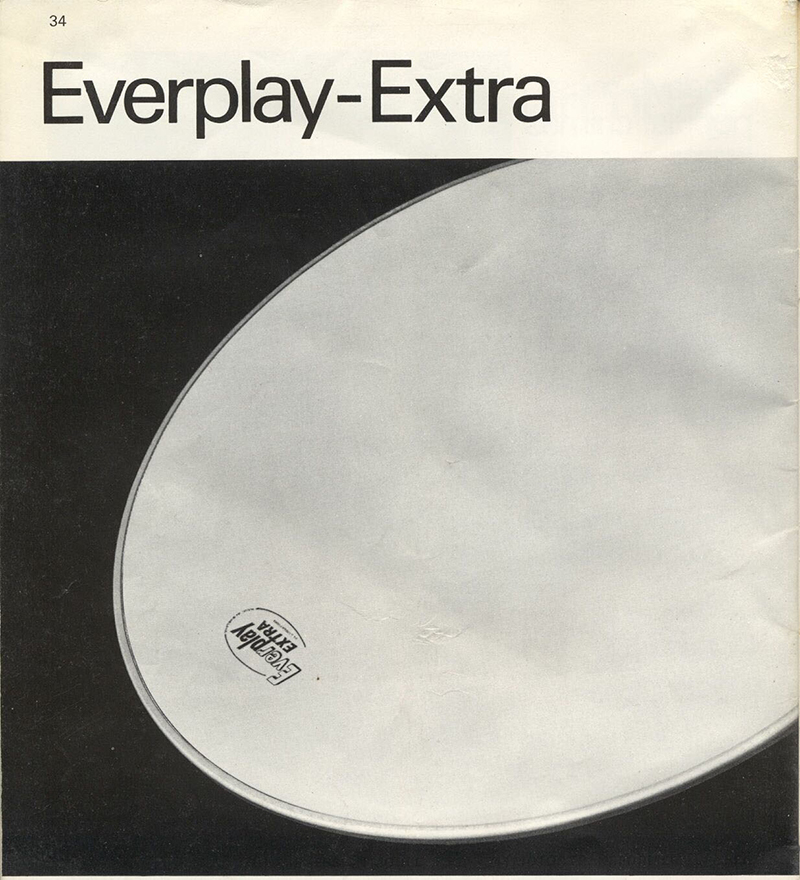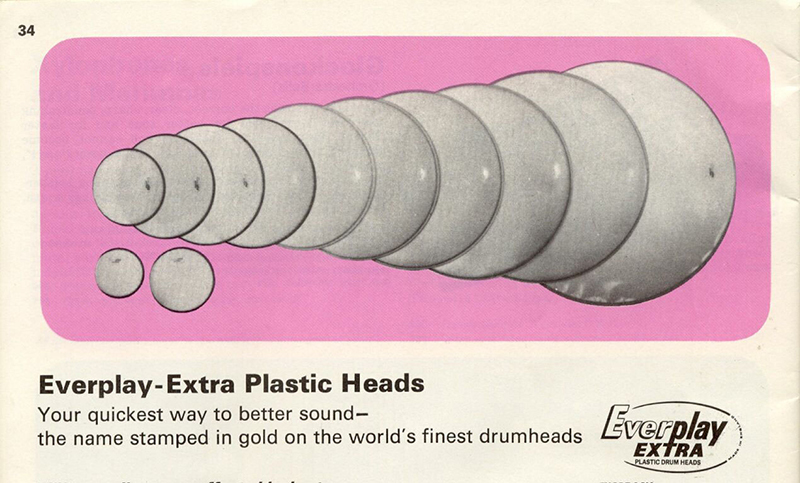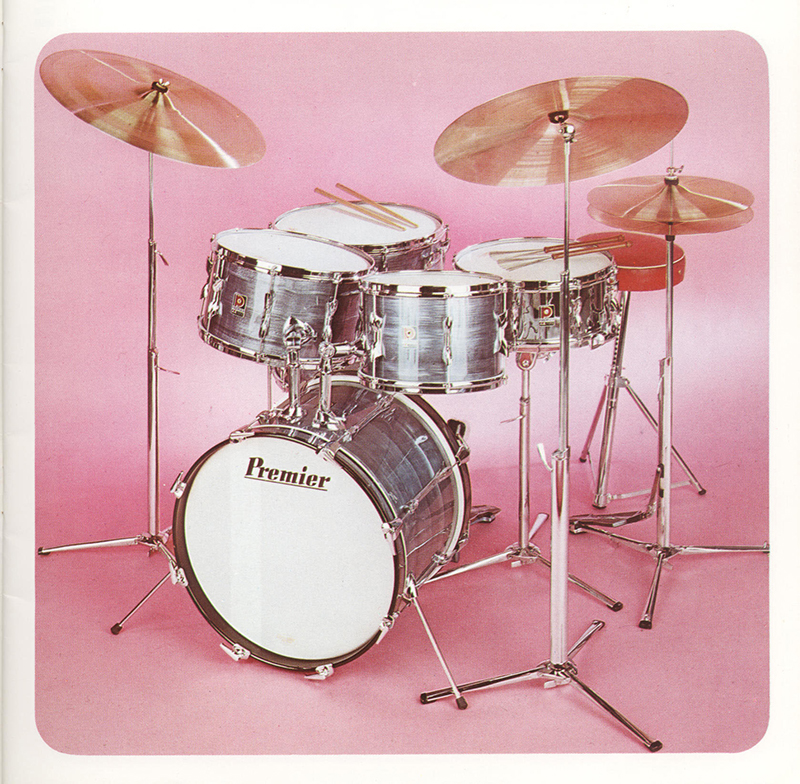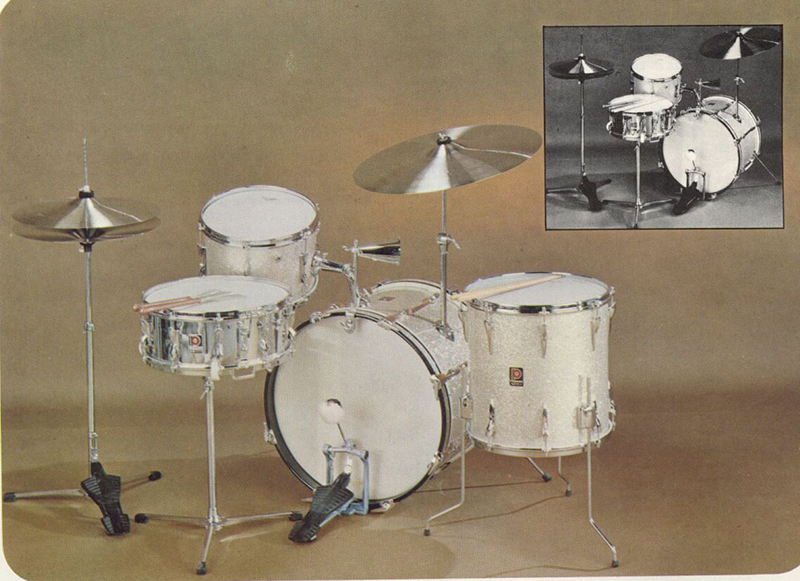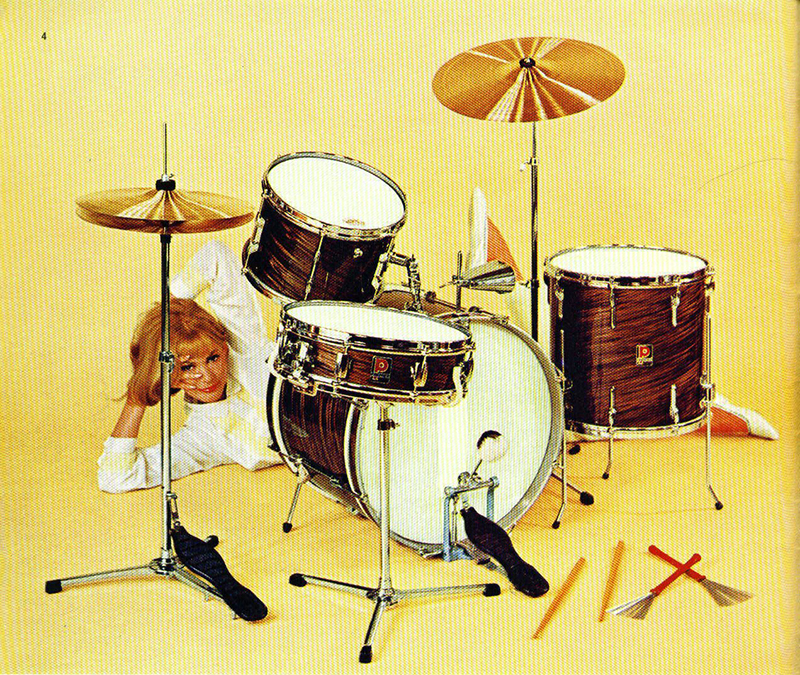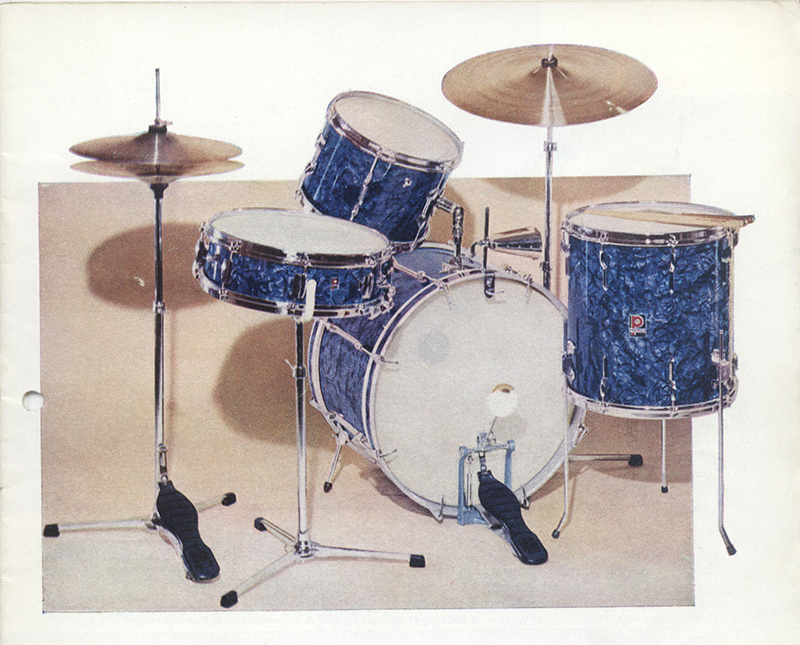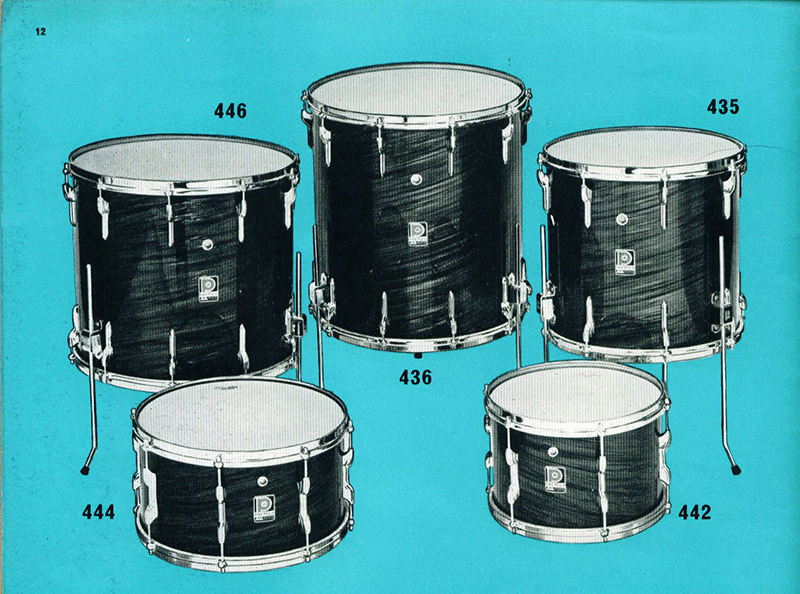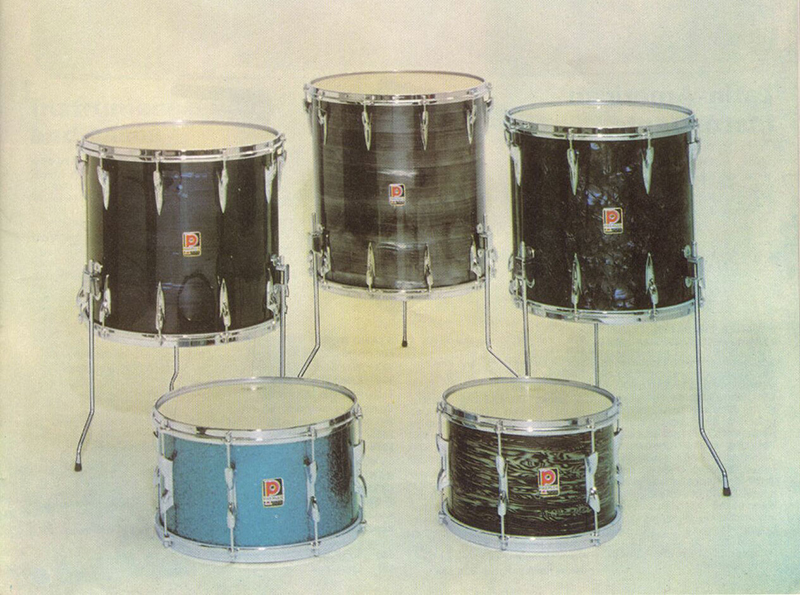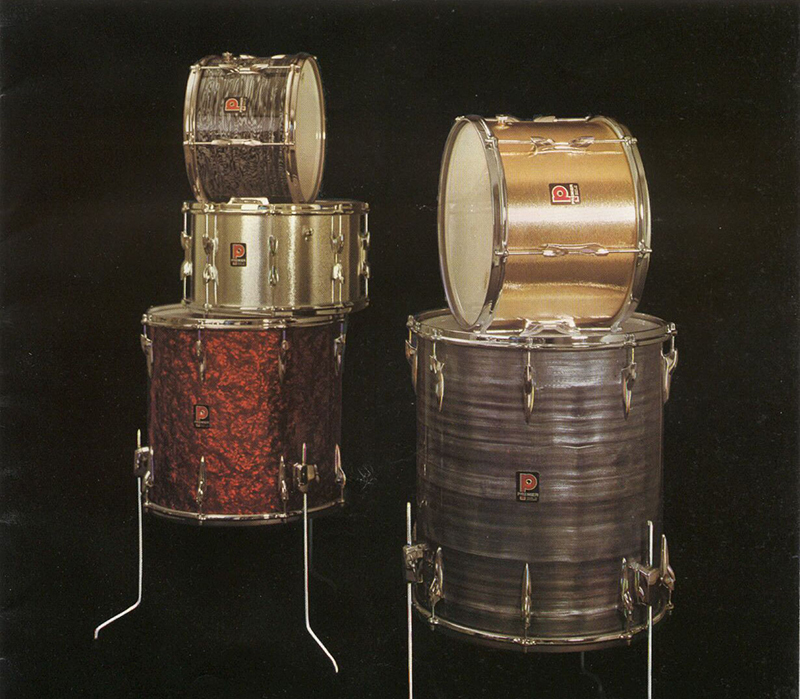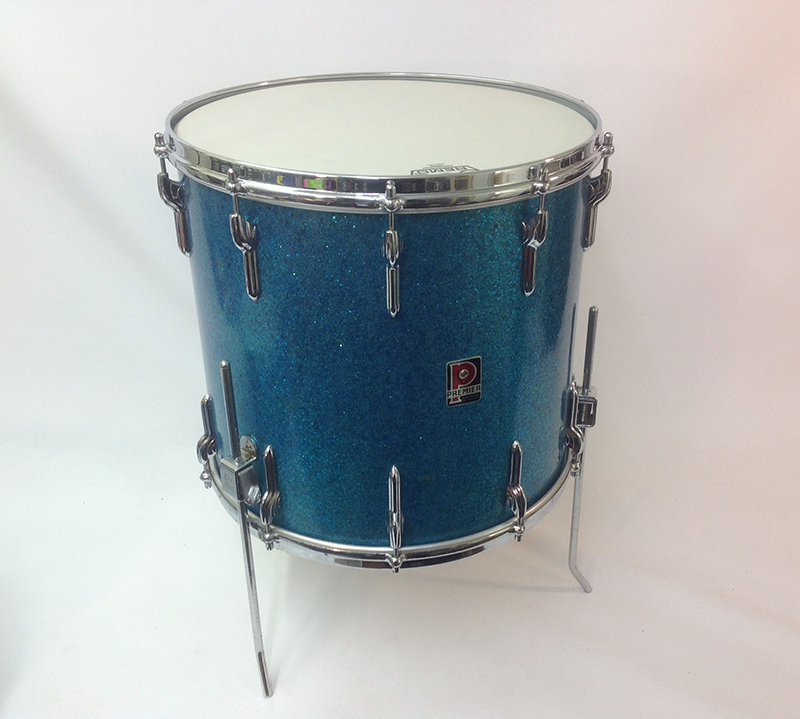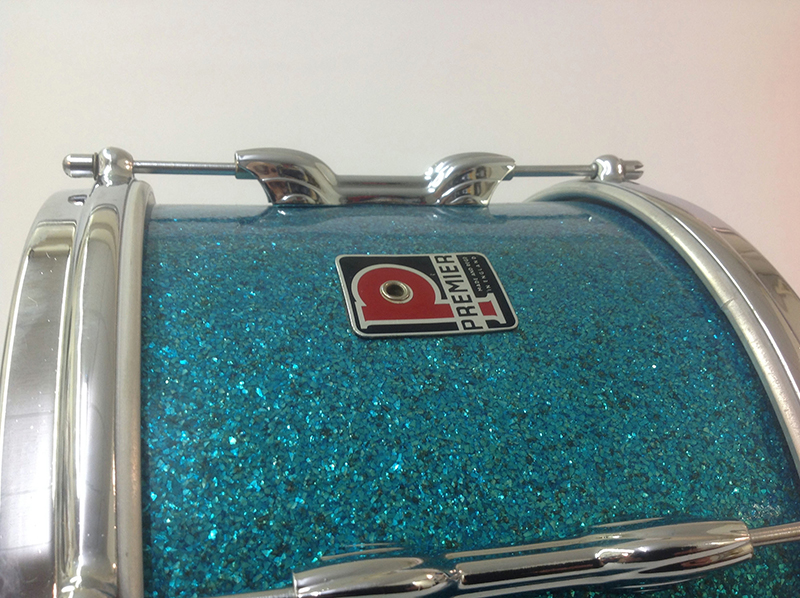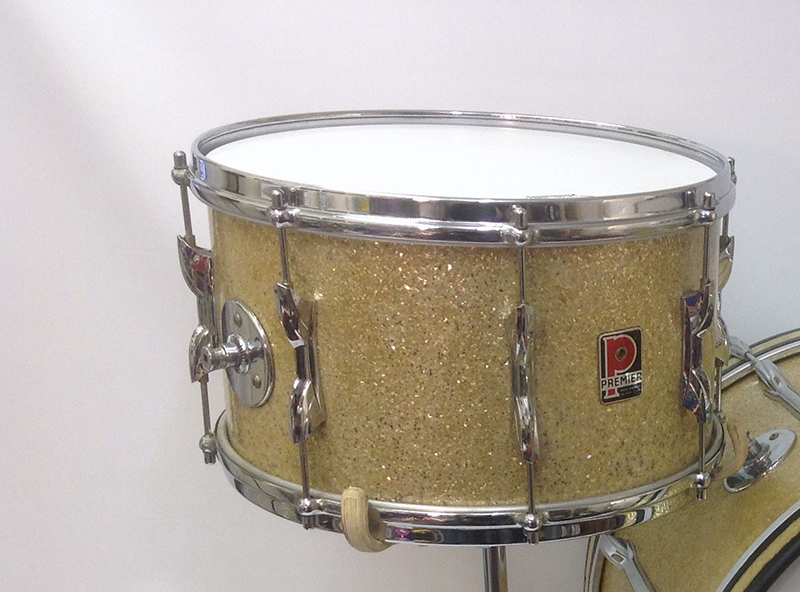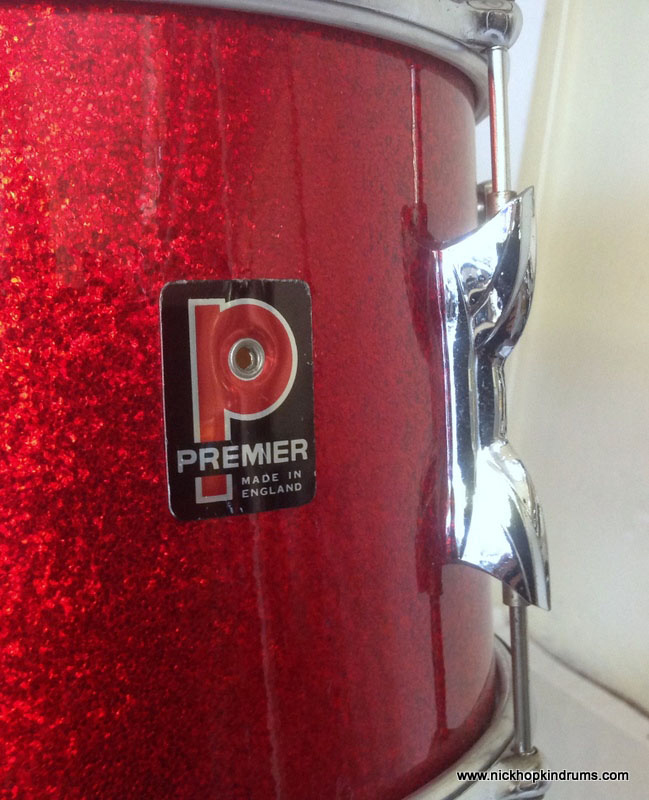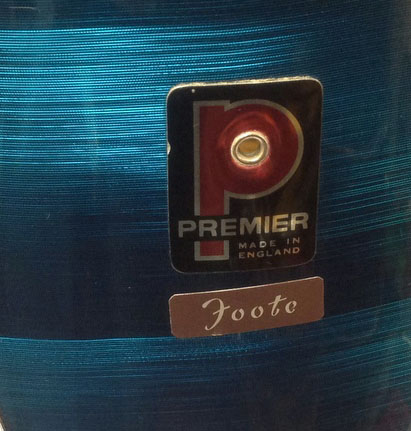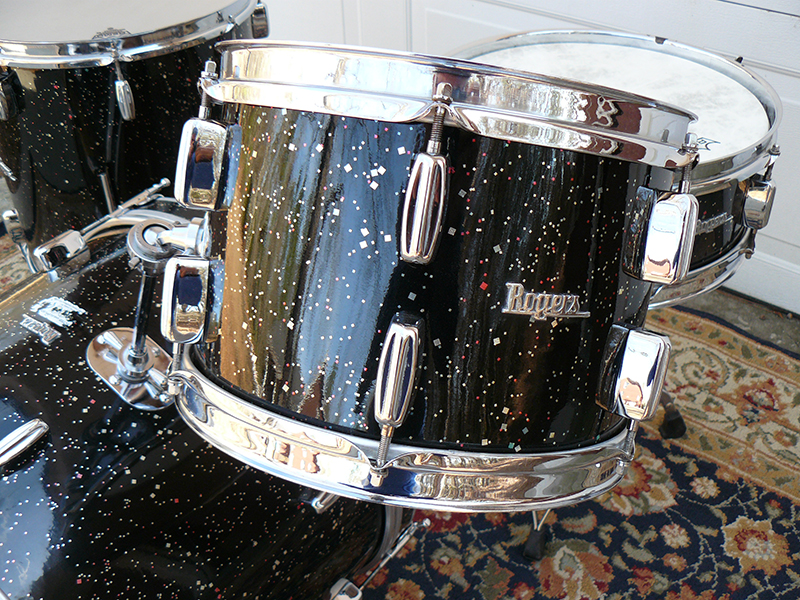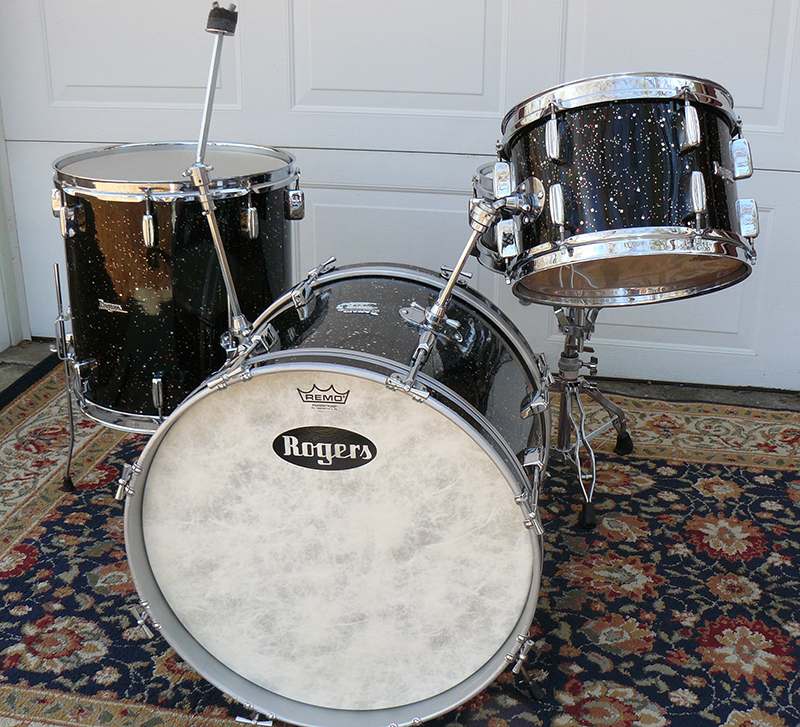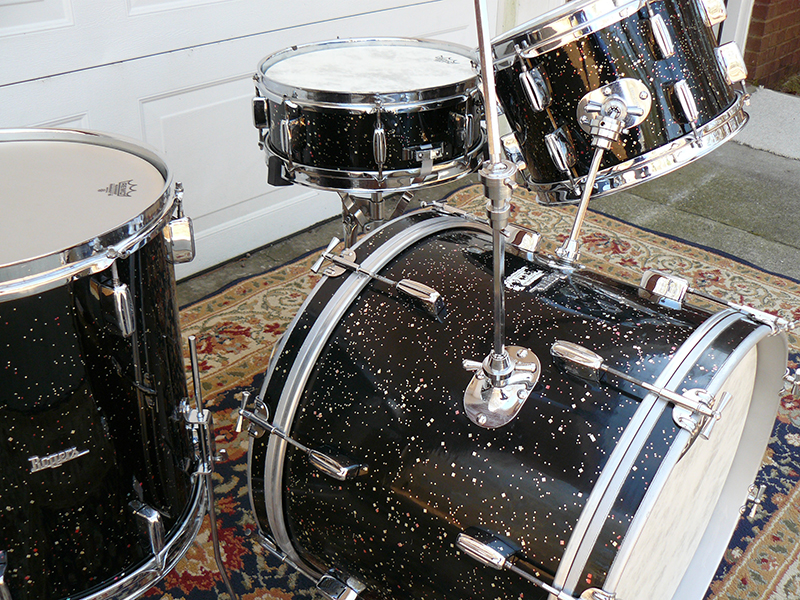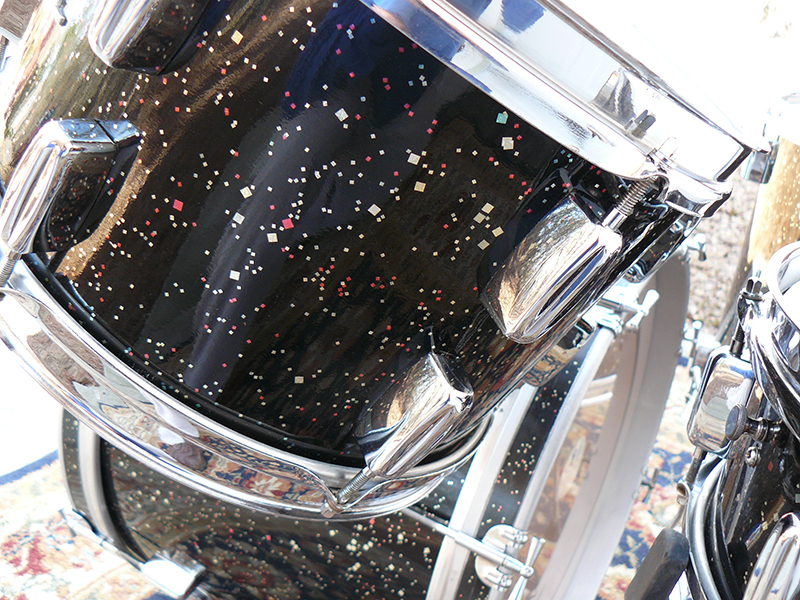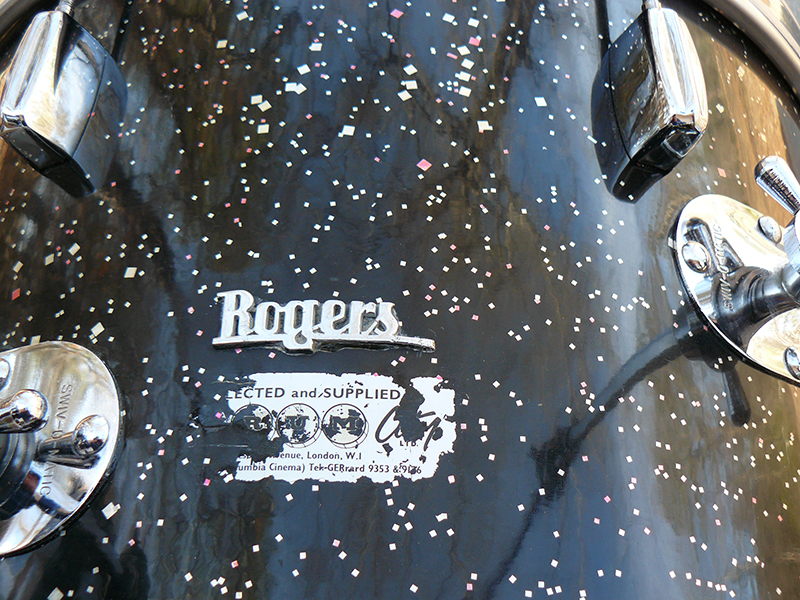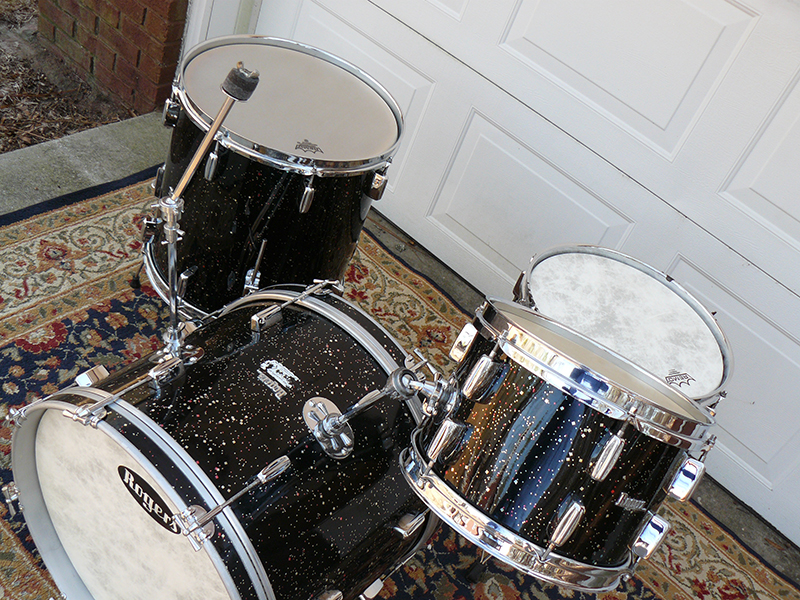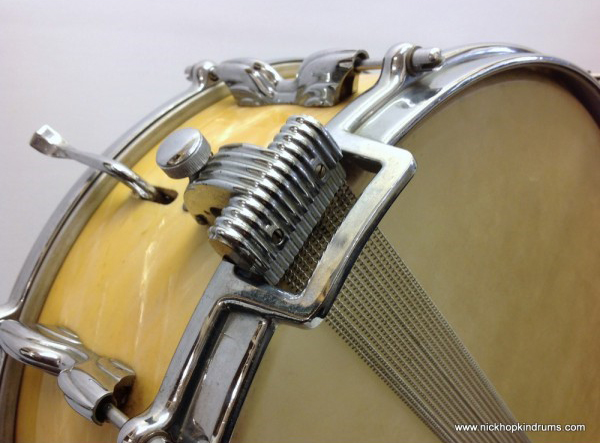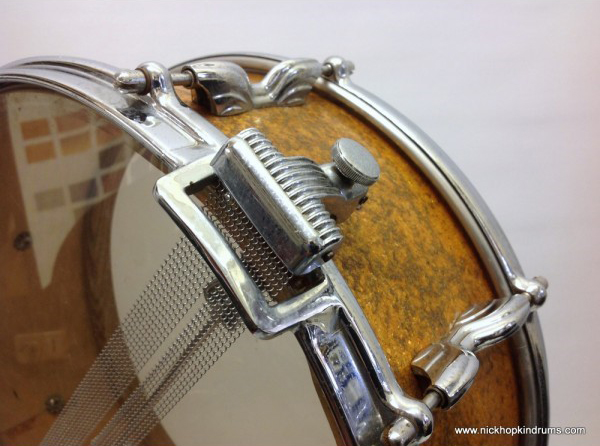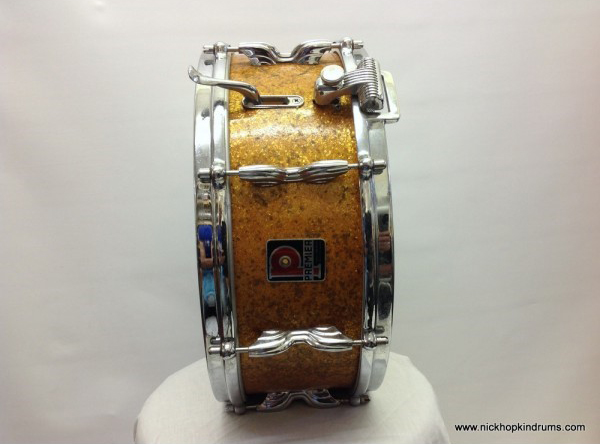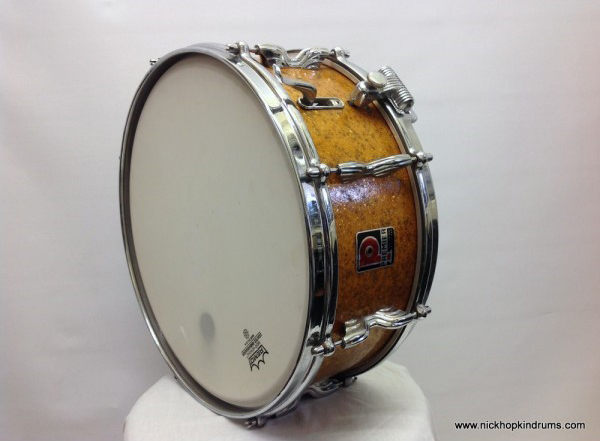With vintage English drums a common enquiry is ‘are my drums pre-international size’?
There is a fair bit of confusion over which English drum manufacturers made shells slightly undersized or oversized, and even then there are misconceptions over which size drums are affected. Here I hope to clarify this for you and give some tips on how to determine if your vintage English drum set takes regular sized heads, or is indeed in ‘funny sizes’!
Premier made pre-international sized drums in a 20, 10, 12 and 16 (metric sized shells) on all sets pre-1967. All other Premier drum shells should be standard (international) sized, although there are exceptions (notably larger bass drums pre 1960, that were non-standard sized and fitted with calf heads – 22,24,26 etc). Premier made their own plastic drum heads ‘Everplay’ and ‘Everplay extra’ in the UK, but its worth a mention that in the 1966 catalogue they do an ‘American sized 12”, and 16” head and were manufacturing 13” heads although they didn’t have any 13” toms on their sets.
The actual measurements of pre international drums are as follows:
10” = 9 5/8” actual diameter 12" = 11-7/8" actual diameter 16" = 16-5/16" actual diameter 20" = 19-5/8" actual diameter
Sometime between 1968 and the early 1970’s all Premier shells became international (standard), and you can generally tell by the badge and kit set up. The 1968 Premier catalogue features a mixture of old and new set configurations but by 1972 all sets featured display configurations with regular shell sizes. It is in these intervening years that sets came out of the factory with just about every combination of standard and pre international sized drums. Typically there was a backlog of pre-international shells in the factory which made it into kit set ups, so many kits between 1968 and 1972 have a mixture of international and pre international shells, some with the earlier 1960’s badge, lugs and fittings, some with the later. It’s not unusual to have a kit with an international size bass drum and pre international 12 and 16 toms and often with a mixture of badges and fittings/mounts.
In the 1968 catalogue, Premier introduced the 14 x 8” tom (sometimes referred to as the ‘tuna fish can’ or the ‘pancake tom’) and its to be noted that this was standard sized. By 1972, Premier had introduced the 13 x 9” tom and from then all drums that came out of the factory were standard sized.
If in doubt when looking at a kit to buy, it’s worth noting that Pre international floor toms are always 10 lug, whilst the international shells were 8 lug. With the 12 x 8” tom and 20 x 14” bass drum, the lugs and badges are usually a good indication. If in doubt, its best to measure the shell’s diameter with the head off!
It should be noted that all Premier snare drums are a standard 14”.
Remo are the only manufacturer of pre-international heads, but now produce quite a range; coated and clear Ambassador as well as clear pinstripe are currently available. They will however make anything to order, in any size, so contact your dealer if you fancy something else or have an unusual size bass drum. I recently had some pre international sized Fibreskyn heads on a special order and have some other pre international head options coming soon.
Other 1960’s English drums often require pre-international heads – Dallas (Carlton, President), Olympic, John Grey (Autocrat, Broadway) and some of their snare drums are slightly under or over 14”. Currently there are no heads available off the shelf for these snare drums, but as mentioned Remo will make heads to fit.
It’s worth noting that both Boosey & Hawkes (Ajax, Edgeware, Stratford), Beverley and Hayman never made pre-international sized drum shells so standard heads will fit these drums. I always have Remo Pre international heads in stock at Nick Hopkin Drums and can have anything made to order. Drop me an email if you want to discuss specifics for your set, or head options.

